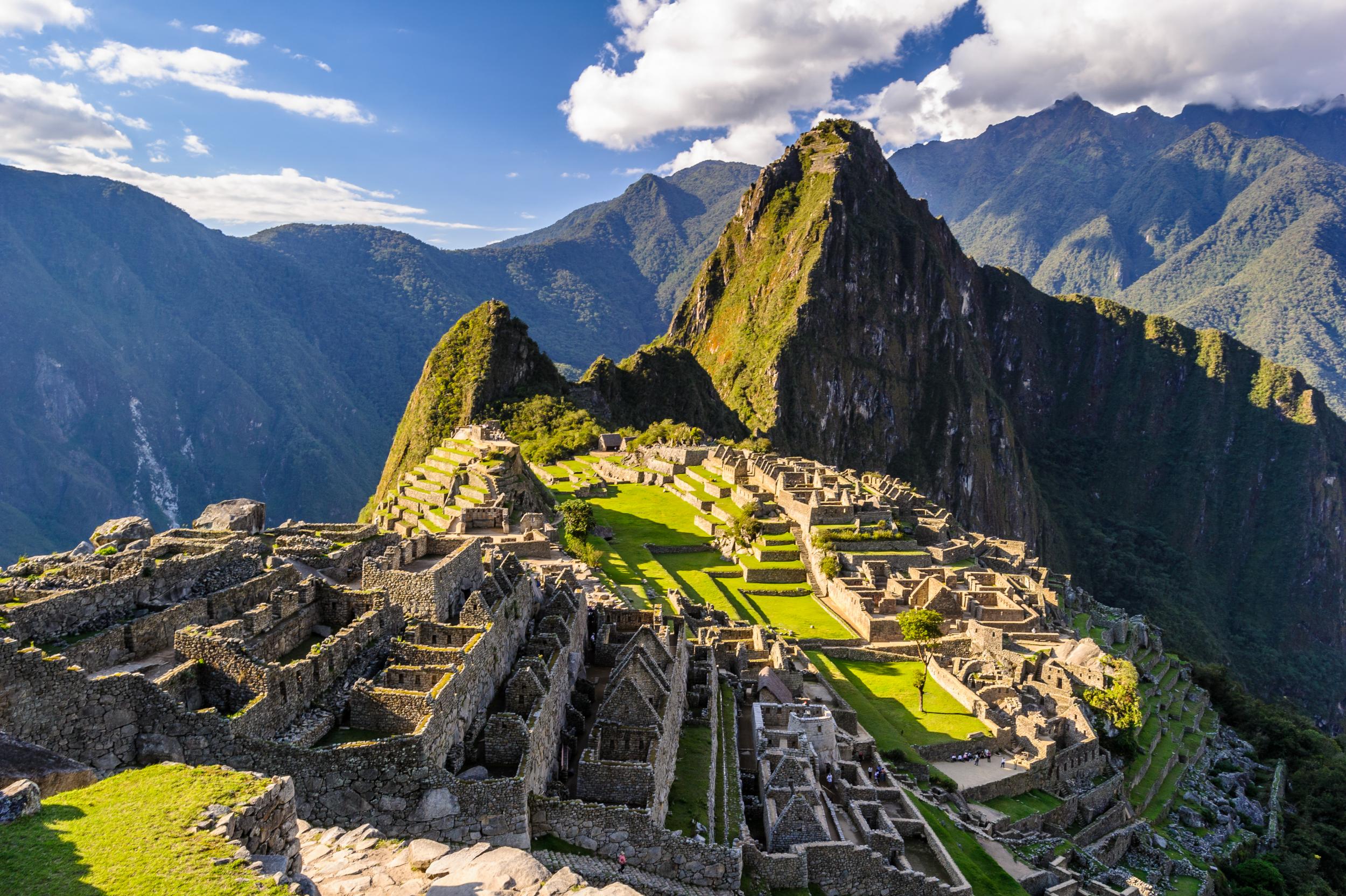Machu Picchu: Fury over plans for new multi-billion pound airport next to ancient Inca citadel
Archaeologists and historians fear development will cause ‘irreparable damage’ to world heritage site and surrounding Sacred Valley

The development of a multibillion-dollar airport that will fly tourists directly to Machu Picchu has sparked outrage among historians, archaeologists and local people.
Bulldozers have already begun clearing land for the airport in Chinchero, a well-preserved Inca city about 3,800 metres above sea level that is the gateway to the Sacred Valley in Peru.
The valley provided maize and other crops to Incan rulers, and several emperors built their private estates there. Incan terraces still cover the hillsides around Chinchero and are used by local farmers.
Those protesting against the airport fear it will cause structural damage to ancient ruins and environmental degradation across a large swathe of the Sacred Valley, not just the famed citadel of Machu Picchu itself.
“The airport planned to be built in Chinchero, Cusco, endangers the conservation of one of the most important historical and archaeological sites in the world,” wrote Natalia Majluf, a Peruvian art historian at Cambridge University who organised a petition against the development.
UNESCO World Heritage sites threatened by rising sea levels
Show all 8She added that the airport “will affect the integrity of a complex Inca landscape and will cause irreparable damage due to noise, traffic and uncontrolled urbanisation”.
Nearly 6,000 people have signed the petition, which calls on Martin Vizcarra, the president of Peru, to reconsider the project.
Currently, most visitors to Machu Picchu arrive at Cusco airport, 50 miles southeast of the ruins, and then either catch a train or bus or embark on the four-day Inca Trail to reach the site.
The airport has only one runway and is limited to handling stopover flights from Peru’s capital, Lima, and nearby cities such as La Paz, Bolivia. But the new airport in Chinchero will be open to larger planes on international routes across Latin America and the US.
The project was first announced in 2012 by Peru’s former president Ollanta Humala and the government plans to complete the airport by 2023.
At the time, Mr Humala said the government would invest $460m (£350m) in the project, not including compensation to the farming communities whose land will be seized.
Announcing the project seven years ago, he said: “The new airport will not only allow more tourists to come, but will also generate more jobs and will permit modernisation and added value for the surrounding communities.”
But critics say the airport will bring noise and air pollution to the area and put a strain on limited water sources in the region.
They have also expressed concerns that planes landing and taking off from the airport would need to pass low over the nearby Ollantaytambo archaeological park. They say this could cause structural damage to the Inca ruins in the park.
More than 1.5 million tourists visited Machu Picchu in 2018, which is almost double the limit recommended by Unesco.
In 2017, Unesco threatened to put the citadel on its list of world heritage sites in danger, owing to the huge strain tourism puts on the fragile ruins and local ecology.
Already, the Peruvian government has introduced a number of measures to curb overcrowding, including introducing strict time slots for visitors and one-way circuits around the ruins.
Justin Francis, chief executive of sustainable travel company Responsible Travel, told The Telegraph that he was worried about the impact the new airport and potential increase in visitor numbers would have on Machu Picchu.
“I thought I’d seen it all,” he said. “When we look back at what went wrong with tourism, this will be the story that sums it all up.
“Here, our world view that tourism growth is infinite rams up against the fact that every destination has a finite capacity, and more so a 15th-century Inca hilltop citadel.”
Subscribe to Independent Premium to bookmark this article
Want to bookmark your favourite articles and stories to read or reference later? Start your Independent Premium subscription today.

Join our commenting forum
Join thought-provoking conversations, follow other Independent readers and see their replies